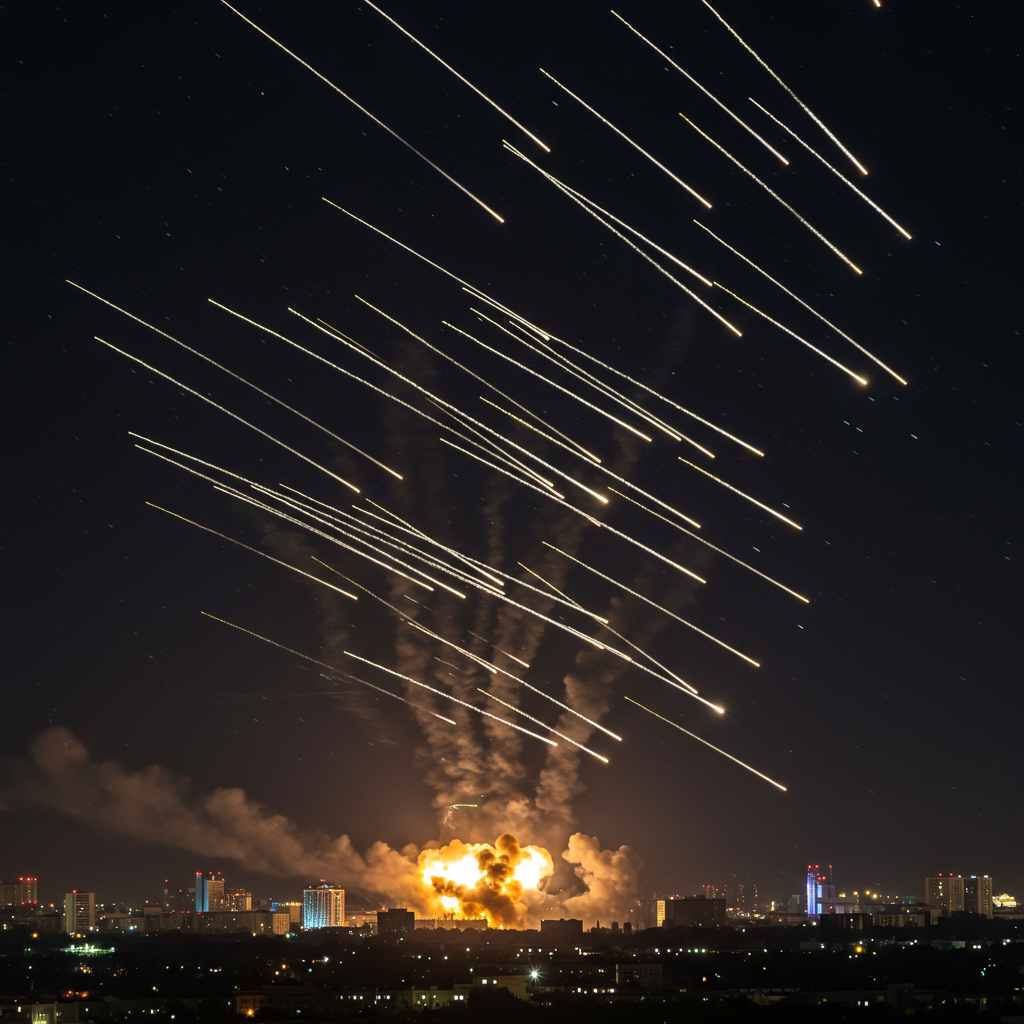The United States launched a major surprise military operation, code-named “Operation Midnight Hammer,” targeting key Iranian nuclear facilities across the country. The strikes involved a historic deployment of B-2 stealth bombers and the first-ever combat use of the formidable 30,000-pound Massive Ordnance Penetrator (MOP) “bunker buster” bombs.
The coordinated attack hit three primary sites: Fordo, Natanz, and Isfahan, aiming a decisive blow against Iran’s nuclear program amidst rising tensions in the Middle East.
Operation Midnight Hammer: A Closer Look
The operation, described by officials as complex and high-risk, involved over 125 U.S. aircraft and more than 75 precision-guided weapons. Seven B-2 Spirit stealth bombers flew an unprecedented 18-hour mission directly from the continental United States, requiring multiple mid-air refuelings to cover the nearly 7,000-mile distance. This ranks as the largest B-2 operational strike in U.S. history and the second-longest B-2 mission ever flown.
To ensure surprise and safe passage into heavily defended Iranian airspace, U.S. forces employed various deception tactics, including decoy aircraft and minimal communications. Just before the B-2s reached their targets, over two dozen Tomahawk cruise missiles were launched from a U.S. submarine, striking key infrastructure at the Isfahan site.
The main bombing run commenced around 2:10 a.m. Iran time. The lead B-2 bomber dropped two GBU-57 MOPs on the deeply buried Fordo facility. Over the next 25 minutes, a total of 14 MOP bombs were deployed across two primary target areas, believed to be Fordo and Natanz. U.S. officials confirmed that the entire strike package entered and exited Iranian airspace without encountering any resistance – Iranian fighters remained grounded, and air defense systems apparently did not detect the U.S. aircraft.
The Power of the Bunker Buster
Central to the mission was the GBU-57 MOP. Weighing 30,000 pounds (roughly 13,600 kg) and measuring 20 feet long, this GPS-guided weapon is the largest conventional bomb in the U.S. arsenal. It is specifically designed to penetrate up to 200 feet of earth or significant depths of reinforced concrete before detonating, making it uniquely capable of reaching hardened, underground facilities like Fordo, which is built deep into a remote mountainside. Only the B-2 bomber is capable of carrying this massive weapon, typically two per aircraft. Prior to this operation, the MOP had only been used in testing environments.
Targets and Initial Assessments
The targeted facilities – Fordo, Natanz, and Isfahan – are critical components of Iran’s nuclear infrastructure. Initial assessments from the Pentagon indicated “extremely severe damage and destruction” at all three sites. Defense Secretary Pete Hegseth stated that their assessment showed “all of our precision munitions struck where we wanted them to strike and had the desired effect,” believing the destruction of capabilities at the primary targets was achieved. Satellite imagery taken the day after the strike reportedly showed significant damage, including multiple large craters near the Fordo site consistent with MOP impacts.
Official Commentary and Context
President Donald Trump hailed the operation as a “spectacular military success,” claiming Iran’s key uranium enrichment sites “have been completely and totally obliterated.” Defense Secretary Hegseth affirmed the mission’s explicit purpose was to prevent Iran from developing a nuclear bomb, emphasizing it was not aimed at regime change or targeting Iranian troops or civilians. He attributed the plan’s success to President Trump’s “bold and brilliant” strategy, declaring that “American deterrence is back.”
Chairman of the Joint Chiefs Gen. Dan Caine noted that Iran was “caught flatfooted” and unaware of the incoming strike. The U.S. operation occurred following approximately 10 days of extensive Israeli attacks aimed at degrading Iran’s air defense capabilities and other military infrastructure. The strikes mark a significant escalation in the ongoing conflict involving Iran, Israel, and now directly the United States, placing the U.S. once again fighting in the greater Middle East.
Aftermath and Potential Retaliation
Immediately following the U.S. strikes, Iran’s Foreign Minister condemned the attack and stated Iran reserved the right to respond. Iranian officials confirmed the strikes but claimed the sites had been evacuated beforehand, denying suffering a major blow. Within hours, Iran reportedly launched a barrage of missiles targeting Israeli cities like Tel Aviv and Haifa, causing multiple injuries.
In anticipation of potential Iranian retaliation, either directly or through proxy forces, U.S. forces in the region, particularly in Iraq, Syria, and the Gulf, have been placed on high alert with elevated force protection measures. Gen. Caine warned Iran that any retaliatory action would be an “incredibly poor choice,” stressing that U.S. troops are prepared to respond. Messages are being delivered to Iran through various channels, reportedly offering opportunities for negotiation towards a peace settlement.



